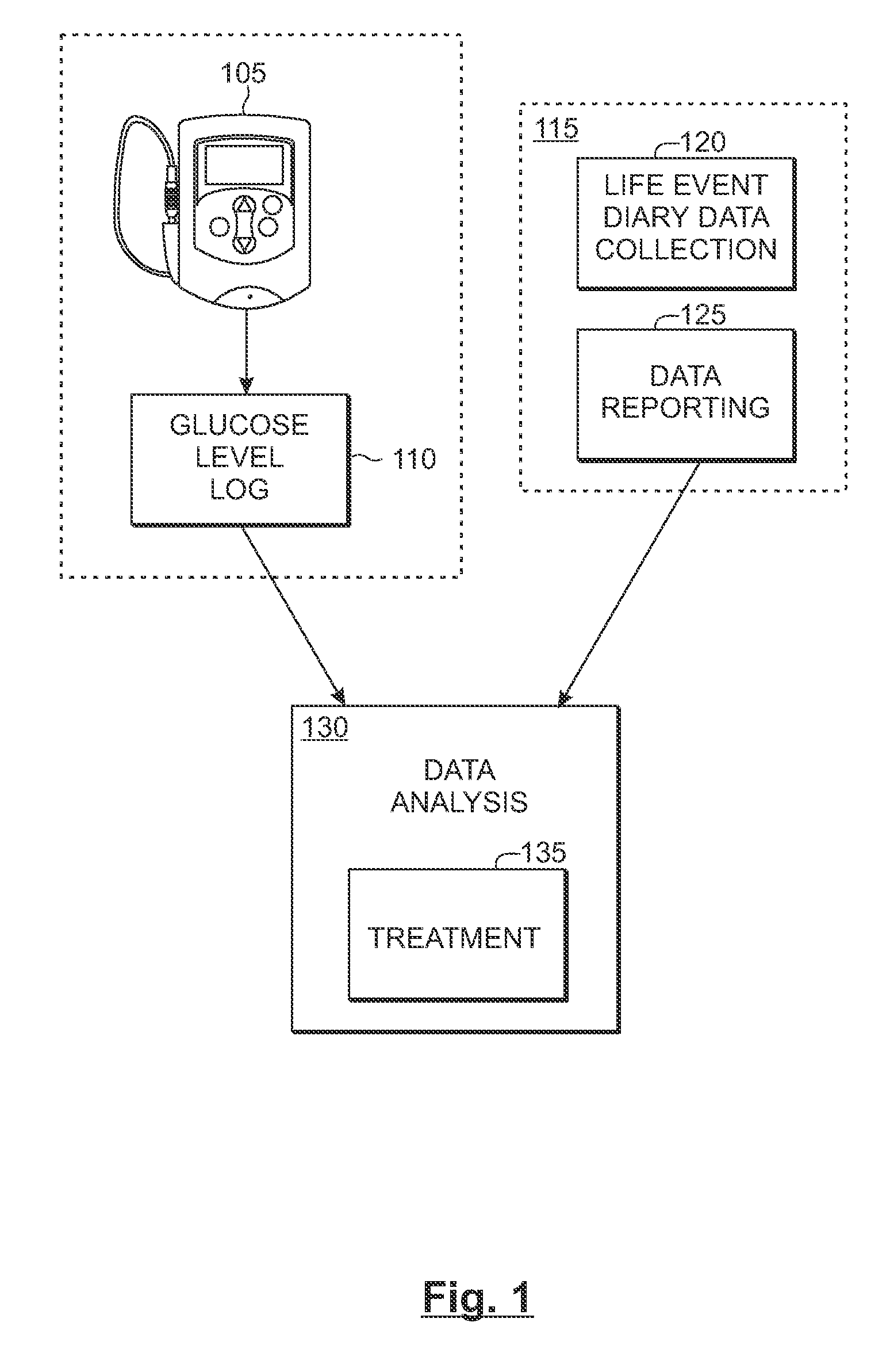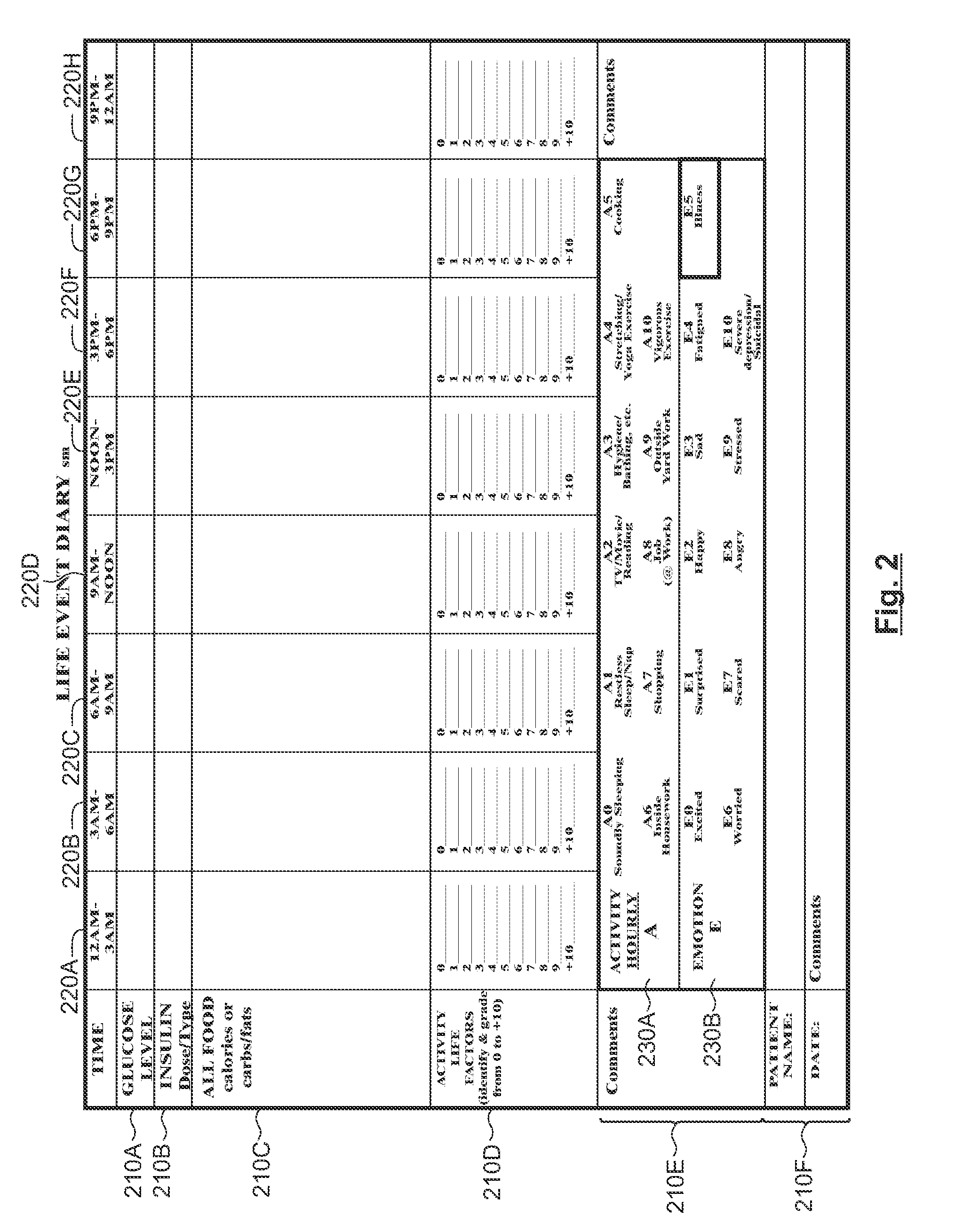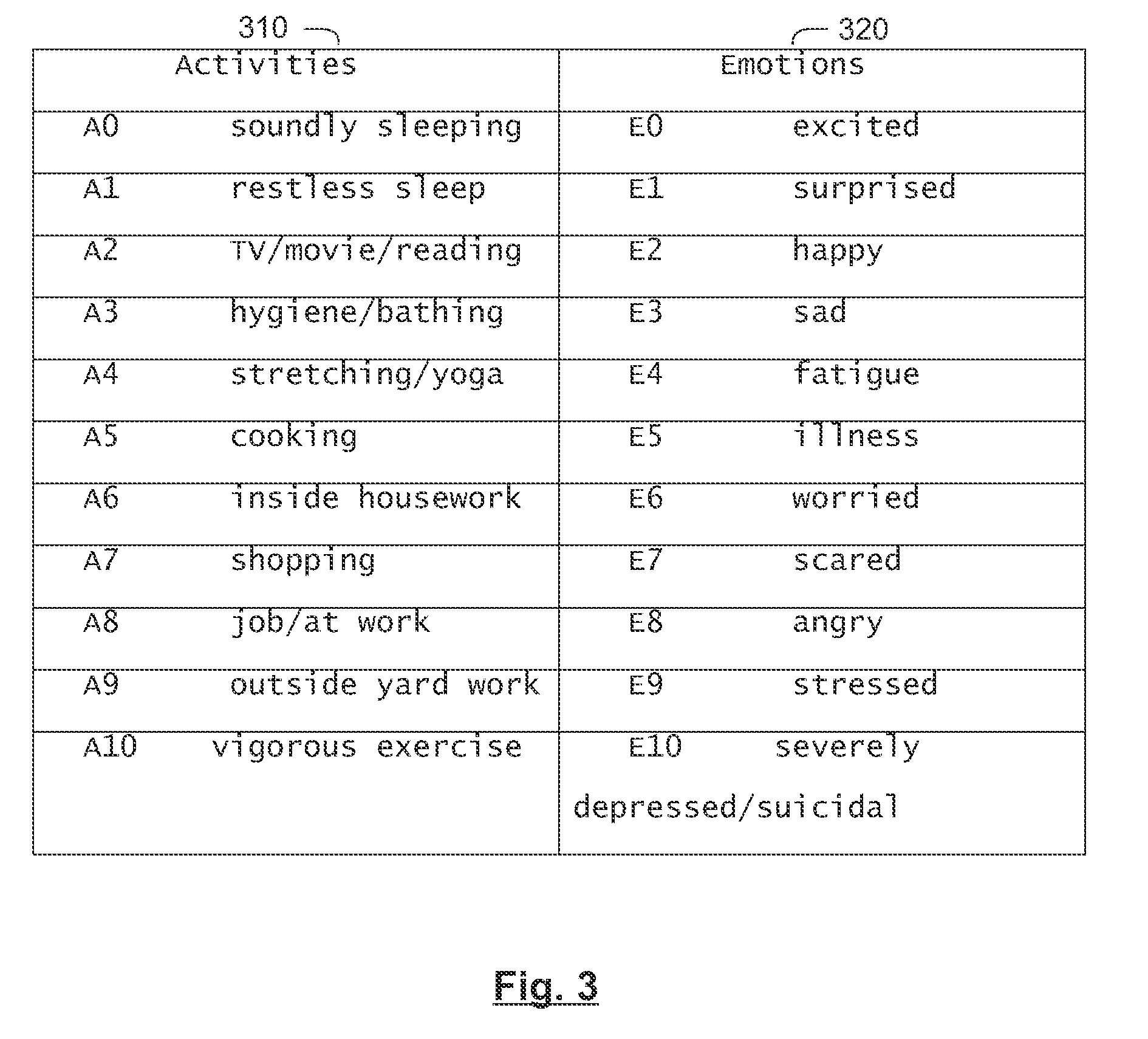Predictive treatment of dysglycemic excursions associated with diabetes mellitus
a technology of dysglycemic excursions and diabetes mellitus, which is applied in the field of diabetes mellitus treatment of dysglycemic excursions associated with diabetes mellitus, can solve the problems of impaired vision or blindness, disproportionately expensive diabetes, and affecting the eyes, kidneys and nerves
- Summary
- Abstract
- Description
- Claims
- Application Information
AI Technical Summary
Benefits of technology
Problems solved by technology
Method used
Image
Examples
Embodiment Construction
[0032] The ultimate goal of research into the treatment of diabetes mellitus is the complete cure and elimination of the disease. Some of this research is directed towards transplantation of insulin producing pancreatic islets, and towards whole pancreas organ transplantation. As with many types of transplantation, the practicality of pancreatic transplantation is severely limited by the general lack of availability of organs and resources. Other research is directed towards the production of an artificial pancreas capable of measuring blood glucose levels and immediately adjusting insulin infusions to avoid low and high glucose excursions. However, this research has not yet produced results sufficient to provide practical treatment of diabetes mellitus on a large scale.
[0033] Present treatment strategies for regulating glucose levels by administering insulin are generally of a reactive nature. That is, they are responsive to measurements of blood glucose levels that have already o...
PUM
| Property | Measurement | Unit |
|---|---|---|
| time | aaaaa | aaaaa |
| time | aaaaa | aaaaa |
| threshold crossing | aaaaa | aaaaa |
Abstract
Description
Claims
Application Information
 Login to View More
Login to View More - R&D
- Intellectual Property
- Life Sciences
- Materials
- Tech Scout
- Unparalleled Data Quality
- Higher Quality Content
- 60% Fewer Hallucinations
Browse by: Latest US Patents, China's latest patents, Technical Efficacy Thesaurus, Application Domain, Technology Topic, Popular Technical Reports.
© 2025 PatSnap. All rights reserved.Legal|Privacy policy|Modern Slavery Act Transparency Statement|Sitemap|About US| Contact US: help@patsnap.com



